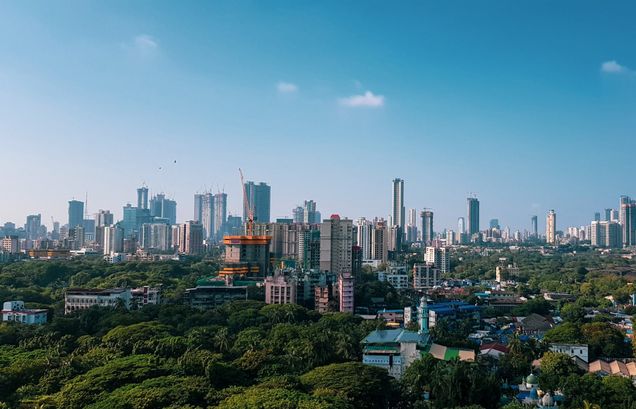GDP Center Round-Up: Think20 (T20) Indonesia Summit 2022

By Samantha Igo
On September 4-6, 2022, leading experts and policymakers will gather in Bali, Indonesia for the Think20 (T20) 2022 Summit to discuss the latest research-based policy recommendations and matters of global importance. More than 600 authors have worked on policy briefs to deliver policy options to Group of 20 (G20) leaders on three key themes: global health architecture, digital transformation and energy transition.
This year, Rishikesh Ram Bhandary from the Boston University Global Development Policy Center (GDP Center) and members of the Task Force on Climate, Development and the International Monetary Fund co-authored two policy briefs for the T20 on international financial institutions, multilateral development banks and their role in energy transitions. The GDP Center and the Task Force have also produced research on the fiscal impacts of energy transitions in India and hydrocarbon exporters in Latin America and the Caribbean, as well as tracking the impact of the Global Financial Safety Net in recovering from the economic impacts of the COVID-19 pandemic and more.
Explore the latest research:
The Role of the IMF in Facilitating Green Energy Transitions

Net-zero growth trajectories will entail a fundamental shift in the composition of the global economy, especially in the energy sector, with carbon-intensive economies in particular facing the dual challenge of winding down fossil fuel-intensive sectors while scaling up clean energy. As the only multilateral organization charged with promoting the stability of the international financial and monetary system for long-run growth, the International Monetary Fund (IMF) is uniquely positioned to help facilitate green energy transitions.
A new T20 policy brief authored by Rishikesh Ram Bhandary, Aasheerwad Dwivedi, Daniel Titelman, Laveesh Bhandari, Noel Perez, Marilou Uy, Sara Jane Ahmed and Amar Bhattacharya addresses the role of the IMF in supporting economies that are carbon intensive and reliant on fossil fuels for domestic revenue. Read the policy brief.
Supporting Energy Transitions and COVID-19 Recovery: The Role of International Financial Institutions

Recovering from the COVID-19 pandemic has given developing countries the opportunity to embark on an energy transition that supports green growth while rebuilding and reenergizing their economies. However, the divergent paces of economic recovery between advanced economies and developing countries has created a challenging macroeconomic situation. In this context, the role of multilateral development banks (MDBs) is particularly salient.
G20 members have a unique opportunity to help MDBs tackle the challenges created by climate change and the shift to sustainable development pathways. With the capital adequacy frameworks of MDBs on the G20 agenda this year, G20 members should take concrete steps to bolster the balance sheets of MDBs.
A new T20 policy brief by Rishikesh Ram Bhandary and coauthors outlines what changes are needed to enable MDBs to scale up energy finance in a significant manner. The brief focuses on the capital base of MDBs, the need to target financial and non-financial barriers to scaling up renewable energy and the importance of maximizing value addition through a focus on clean energy value chains. Read the policy brief.
India’s Energy and Fiscal Transition

At the 2021 United Nations Climate Change Conference in Glasgow, India’s Prime Minister Narendra Modi announced India will meet a target of net-zero emissions by 2070. As a result, India will face a significant energy and fiscal transition over the coming decades, as fossil fuels account for a significant share of Indian government revenues.
An April 2022 technical paper from researchers at the Centre for Social and Economic Progress (CSEP) identifies the fiscal challenges that will accompany India’s energy transition. Higher than previously estimated, the authors find that revenues from fossil fuels are more than double that of India’s entire defense expenditure, three times the health expenditure of the Central and State governments and comparable to the entire public sector expenditure on education, sports, art and culture. They also calculate fossil fuel revenue projections for India based on three different energy scenarios, ultimately findings that fossil fuel revenues, as a share of government revenues, would drop from 13.3 percent in 2019 to just 3.8 percent by 2040. The authors say revenues will fall significantly as a result of the transition, imposing challenges for both the Central and State governments in India. They advise other sources of revenue be explored to reduce India’s dependence on fossil fuels in the coming years. Read the technical paper.
Fiscal Impact Estimates of Net-Zero Emissions Transition for Major Hydrocarbon Producers in Latin America and the Caribbean

Hydrocarbon producing countries will face important fiscal challenges to reduce greenhouse gas emissions in line with the Paris Agreement on Climate Change before moving on to a net-zero emission (NZE) scenario. The complexity of the NZE transition will be determined by the degree of fiscal dependence on hydrocarbons.
A new technical paper from a team of researchers at the United Nations Economic Commission for Latin America and the Caribbean examines the fiscal impacts of an NZE transition on Bolivia, Brazil, Colombia, Ecuador, Mexico and Trinidad and Tobago and outlines next steps for preparing for green, just transitions, including mobilizing domestic resources, integrating climate change into IMF work, providing more flexibility in the use of IMF resources and embracing global coordination. Read the technical paper.
Global Financial Safety Net Tracker
![]() The Global Financial Safety Net (GFSN) Tracker, comprised of two components, allows users to explore and track the global financial agreements and short-term crisis finance. The first component of the interactive displays the total amount of financing provided by the IMF, regional financial arrangements (RFAs) and central bank bilateral currency swaps deployed to combat the COVID-19 crisis. Country specific data, approved loan amounts, RFA membership and country income group information are available for highlighted countries within the interactive. This COVID-19 tracking source is the first of its kind providing regular updates and overviews of all RFA loans and central bank currency swaps disbursed in response to the pandemic. A recently updated feature allows users to visualize the directionality of swap flows from the lending to borrowing countries. The second component of the interactive is the GFSN Annual Lending Capacity, where countries are color-coded based on the lending capacity available to them through the IMF, RFAs or central bank currency swaps.
The Global Financial Safety Net (GFSN) Tracker, comprised of two components, allows users to explore and track the global financial agreements and short-term crisis finance. The first component of the interactive displays the total amount of financing provided by the IMF, regional financial arrangements (RFAs) and central bank bilateral currency swaps deployed to combat the COVID-19 crisis. Country specific data, approved loan amounts, RFA membership and country income group information are available for highlighted countries within the interactive. This COVID-19 tracking source is the first of its kind providing regular updates and overviews of all RFA loans and central bank currency swaps disbursed in response to the pandemic. A recently updated feature allows users to visualize the directionality of swap flows from the lending to borrowing countries. The second component of the interactive is the GFSN Annual Lending Capacity, where countries are color-coded based on the lending capacity available to them through the IMF, RFAs or central bank currency swaps.
As of March 31, 2022, the GDP Center and the Latin American Institute at Freie Universität Berlin estimate the financing available from the GFSN has increased to approximately $3.7 trillion in lending capacity, or 4.5 percent of global gross domestic product (GDP). However, distribution and availability of these emergency funds has been highly uneven and unequal. According to researchers, there is an urgent need to coordinate the different elements of the GFSN to improve country access to vital fiscal resources. Explore the interactive and read the policy brief.
*
Never miss an update: Subscribe to the Global Economic Governance Newsletter